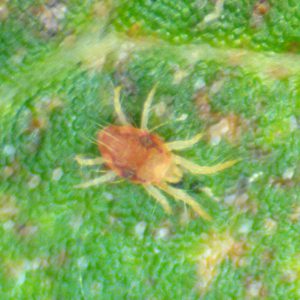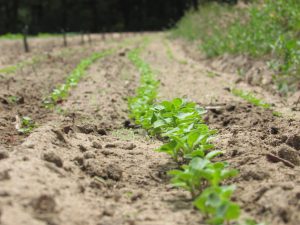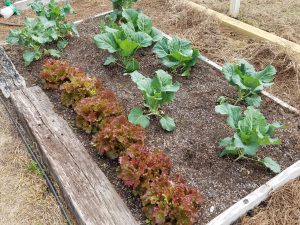Gardening in North Florida can be a challenge. Conditions in the panhandle are very different than in most other locations in the country, and learning what and how to grow takes time! Here are a few tips to help the aspiring gardener adapt to the unique climate and soils here.
- Know Your Varieties
Not every variety of vegetable is the same. Some differences may be obvious – a purple cabbage isn’t hard to distinguish from a green one, and a cherry tomato will never be mistaken for a beefsteak. Other differences are not so obvious, and you may have to do some research to figure out what you’re getting with a particular cultivar. Some are better adapted to growing in the heat, or may have resistances to certain diseases or pests. See the Florida Vegetable Gardener’s Guide (https://edis.ifas.ufl.edu/publication/VH021) or the Vegetable Production Handbook of Florida (https://edis.ifas.ufl.edu/publication/CV292) for varieties that do well in Florida.
- Light is Your (Plants’) Friend
Space for a garden is often limited, but remember that light can’t be! A shady location leads to unhappy vegetables. Plants produce energy by absorbing the rays of the sun, and garden plants need a lot of light to make the food we eat. If your plants are looking spindly and not producing well, look up and see what’s shading them. If possible choose a location for your garden that gets at least six hours of full sun each day. Even more is better!
- Plant at Proper Times
There are really two growing seasons in North Florida: spring and fall. It gets too cold for most plants in the winter, and tropical plants will especially suffer. The heat of the summer is similarly hard on a garden. Few plants can continue producing their best in the face of such high heat and humidity. Okra and peppers might soldier on through the heat, but cool-weather loving crops like peas, lettuce, and broccoli will meet defeat. Know what temperatures each plant prefers and plan your garden accordingly. Consider starting transplants indoors early to get the most growing time possible – February or March is a good time to start transplants in the spring, and September in the fall.
- Watch your Watering
Even watering is important for crops, and the weather rarely cooperates. The occasional drought followed by a ten inch rain can make managing irrigation a headache, but try to keep up with the weather! Remember that warmer weather causes more evaporation, and larger plants take up more water. That being said, a ten-inch rain during the summer will probably supply all the water your plants need for the day, so consider turning off the irrigation when it rains. It’s just as possible to overwater as it is to let plants dry out too much.
- Be Wise When you Fertilize
The soil in much of our area is very sandy. In some places, it’s nothing but! Highly sandy soils don’t hold on to much in the way of water or nutrients, so the gardener needs to balance their inputs to adjust for this fact. Get your soil tested so you know what nutrients are in the soil (your local Extension office can help with that). When you do fertilize, don’t dump all your plants need for the year on at once! Chances are, much of it will just wash away in the next rain. Instead, split your fertilization up into several applications over the growing season. Try also using slow-release fertilizers or organic sources of nutrients that break down over time and feed plants. You can also amend your soil with organic matter (things like compost and manure are good sources) to help add some nutrient-holding capacity. Organic matter can also help deter sandy-soil-loving nematodes, which are microscopic worms that can damage the roots of plants.
- Scout for Pests and Diseases

Spider mites are a tiny, but common garden pest.
Florida’s climate makes it very attractive not just for retirees, but also for all sorts of plant pests and diseases as well. Keep a close eye on your garden and deal with anything out-of-the-ordinary before a problem becomes overwhelming. Pests of all sorts, whether they are weeds, insects, or fungi, are much easier to eliminate when they’re young or in small numbers. Remember that not everything is a plant pest – some insects are beneficial predators that can keep the enemies at bay, so don’t always immediately reach for a chemical that’s going to kill everything. Natural and biorational options such as neem oil, Bacillus thuringiensis or Bt, insecticidal soap, or diatomaceous earth can work just as well as other pesticides, and can help avoid harm to pollinators and beneficials. Know the pest you’re treating before you try getting rid of it! See our EDIS publication on natural garden products (https://edis.ifas.ufl.edu/publication/IN197) for more information.
Remember not to get discouraged! If you need help figuring out what’s going wrong in your garden, you can always talk to the folks at your local Extension office. There’s also plenty of other information out there – look for our other EDIS publications on a variety of topics (https://edis.ifas.ufl.edu/). Happy gardening!
- Quercus Geminata, the Sand Live Oak - November 20, 2025
- Snakes of the Panhandle - October 10, 2025
- Ganoderma, a Deadly Disease of Palms - September 4, 2025


